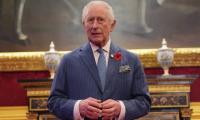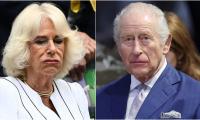Gold has a history that goes back thousands of years. Nobody knows when it was first discovered or how, but what we do know is that the human race has understood it to be of value since its discovery. The founder of the first Egyptian dynasty, Menes, wrote a code in 3100 BC that fixed the ratio of gold to silver as 1:2.5. Homer mentions gold as the glory of the immortals.
Over time, kings, kingdoms and nation-states have made every effort to possess gold. The monetary system of leading industrial powers was once based on gold. However, in the aftermath of the Great Depression of the 1930s and then after WWII, gold lost some of its importance as other assets with reasonable returns surfaced.
A particular chapter in the history of gold is known as the California ‘Gold Rush’ of the mid 19th century. As gold turned up, thousands from around the globe descended upon California to seek fortune.
Something akin to the California gold rush is happening nowadays. China recently launched its own benchmark for gold pricing in its own currency. It wants to compete with London (where the daily price for the gold bullion is set) in terms of influencing the price of gold. Gold producers, at least the biggest ones, have seen their prices double this year.
Billionaire investors like George Soros have invested considerable amounts in gold and gold companies. The Netherlands and Germany are now in the process of repatriating their gold from locations in New York and France. The Royal Mint of UK recently started offering gold as an option in its pension schemes.
The question is; why are countries around the globe now rushing to accumulate more of this shiny metal? One surprising answer to this question came from two economists, Joshua Aizenman and Kenta Inoue. Their research suggests that the accumulation of gold over time is related to the ‘global power’ status of countries. This status is not just confined to the present, but also to countries that were once considered global powers.
If we are to go by this explanation, then the accumulation by China and India becomes much easier to explain, as well as that of the US (the issuer of the most used reserve currency, the dollar). In fact, the researchers noted a significant correlation between the economic rise of India and China and their accumulation of gold. The Netherlands, once considered a global power, holds the 10th largest reserves of gold. Of the top 20 holders of gold as reserves, quite a few were major power of yesteryears (Britain, Japan and Portugal).
In the bastion of modern-day capitalism, the US, 75 percent of its reserves are made up of gold. Perhaps the old dogma of being a global heavyweight on the back of this shiny, heavy metal still holds true for many countries.
Another reason could be the low level of trust that investors now have in governments’ ability to manage their respective economies. Since 2008, when recession struck, the performance of Western economies has been anaemic. All measures to push the economy on a higher growth trajectory have met with a lukewarm response so far. In a suppressed economic environment with lower growth rates, government-backed liquid assets (like bonds and securities) do not garner the same attention of investors as they do in normal times.
And in an era of extremely low (almost zero) interest rates, the returns on assets like bonds also tend to remain low. Couple this with warnings from the IMF and others that the anaemic rates of economic growth are likely to continue. Protracted lower yields on these kinds of assets and pessimistic predictions then make investors look for an alternative. The most preferred one turns out to be gold. This can help explain why the demand for gold is now steadily surging.
The failure of governments to manage their economies towards higher growth rates has another unintended consequence: the loss of confidence in government money, and consequently a rise in demand for gold. The paper money that we carry around in our pockets (known as ‘fiat money’) gets its value due to government decree. If not for government backing, it’s just a worthless piece of paper. But this government decree is effective till the time that people have some degree of confidence in their government.
In the worst case scenario, the value of government-backed paper currency may collapse. One such situation is hyperinflation, which has happened before (as in Weimar Germany in 1920s), in the very recent past (Zimbabwe) and even right now (Venezuela). It does not take very long for the value of paper money to collapse or fluctuate wildly.
That does not happen with gold. Its value is not based on any government decree, and it has managed to hold its value over thousands of years. Given that there is a reasonable probability that the global economy may go through another bout of recession, government-backed assets have gradually lost their attractiveness. A favoured alternative is gold, and other metals like silver.
There is another theory doing the rounds, albeit one that falls more on the conspiracy theory side. With China and bulking up its gold accumulation, the theory goes that it is doing so to replace the US dollar as the world’s premier reserve currency. Once China has enough gold reserves, the theory suggests, they’ll tie their currency to the value of gold. In a world where fiat currency has lost its credibility, by default the country with most gold holdings will call the shots in terms of reserves.
The probability of this happening, though, is remote. Chinese authorities, for example, tinker with their currency quite a bit, and the trillions of accumulated dollars allow them space for this kind of tinkering.
If China is to convert its reserves of more than $3 trillion into gold, it would require around 525,000 tons of gold as per independent estimates (like one by Forbes). This much quantity is more than three times the total quantity of gold ever mined – there, it seems to be an impossibility. Moreover, Russia has tripled its gold holdings since 2005. But there is absolutely no chance of the rouble (Russian currency) replacing the dollar as the reserve currency. In short, this explanation is not credible.
To sum it up, weak economic performance since the great recession is gradually turning investors’ attention towards gold as a safe asset with good returns. Governments around the world are also turning towards the shiny metal, stocking it up in their reserves to reduce risk in the face of increasing volatility. The relatively newfound attraction for gold is also driven by technological advances that have reduced the cost of gold mining by more than thirty percent.
Any further weakening of the global economic prospects or even a short bout of recession would surely send the demand for gold skyrocketing. Only time will tell whether this will ultimately lead to major currencies being backed by gold in the future. But there is a good probability that we are in for another gold rush.
If Pakistan had wiser people in the corridors of power, they would have realised that this is an opportune moment to cash in on the ill-fated Saindak gold reserves.
The writer is a freelance contributor.
Email: shahid.mohmand@gmail.com Twitter: @ShahidMohmand79















